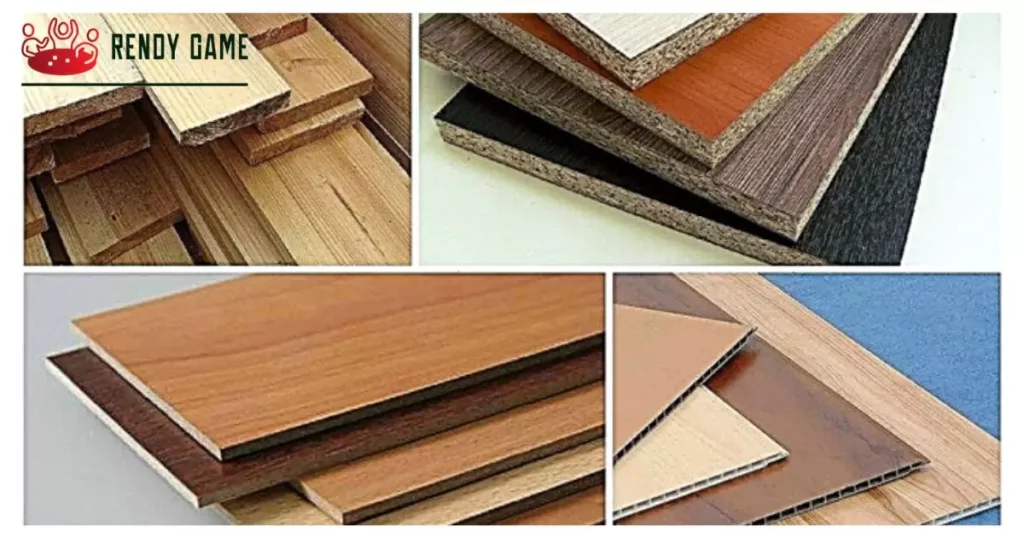Board game boards are the playing surfaces that form the foundation of various tabletop games. These boards serve as the central arena where players navigate their pieces, strategize, and compete to achieve the objectives of the game.
The intriguing question, What are board game boards made of? invites us to explore the fascinating materials that go into creating the essential playing surface of our favorite tabletop games. The composition of board game boards varies, with common materials including cardboard, thick paper, or even specialized game board materials like chipboard or laminated materials.
The materials used in crafting board game boards play a crucial role in shaping the gaming experience. Cardboard and thick paper boards offer a balance between affordability and functionality, making them suitable for a wide range of games.
Common Materials for Board Game Boards
Board game boards come to life through the use of various common materials, each influencing the gaming experience in its own way. Cardboard and thick paper are among the staples, providing a balance of affordability and functionality.
These materials, known for their versatility, are commonly employed in crafting game boards of different sizes and complexities. The widespread use of such common materials highlights their accessibility and the inclusive nature of tabletop gaming.
Cardboard and Thick Paper Boards
Among the diverse materials used to create board game boards, cardboard and thick paper stand out as reliable choices. These materials strike a balance between cost effectiveness and practicality, making them ideal for a wide range of games.
Their lightweight yet durable nature allows for easy handling, while their affordability ensures that board games remain accessible to players of all ages. Whether it’s a classic family game night or a strategic board game enthusiast’s gathering, cardboard and thick paper boards play a fundamental role in bringing the gaming community together.
Chipboard as a Board Material

Chipboard, a versatile material often used in crafting board game boards, is composed of pressed paper pieces mixed with adhesive. This combination results in a sturdy yet lightweight surface, providing an excellent balance for various tabletop games. Chipboard is favored for its durability, making it suitable for games that see frequent use.
Its thickness adds a tactile element to gameplay, giving players a substantial feel as they interact with the board. Chipboard allows for intricate designs and detailed printing, enhancing the visual appeal of board game boards. Many strategy games, where a robust playing surface is crucial, benefit from the resilience and versatility that chipboard brings to the table.
The Role of Laminated Materials in Board Games
Laminated materials play a crucial role in elevating the durability and aesthetics of board game boards. These materials, typically consisting of multiple layers bonded together, offer a protective coating that resists wear and tear.
The lamination process not only enhances the lifespan of the board but also provides a smooth and easily cleanable surface, ensuring a consistent playing experience over time. The use of laminated materials is particularly common in games that involve frequent handling of cards, tokens, or pieces.
This protective layer not only guards against spills and stains but also allows for vibrant and detailed graphics, contributing to the overall visual appeal of the game board. As a result, laminated materials contribute significantly to the longevity and visual allure of board game boards across various genres.
Factors Shaping Material Choices in Board Game Design
When it comes to crafting board game boards, several factors play a pivotal role in determining the most suitable materials. Game designers consider the complexity of the game, the intended user experience, and the overall design aesthetic.
The choice between materials like cardboard, chipboard, or laminated options is influenced by the need for balance between durability and cost effectiveness. These decisions ultimately shape the gaming experience, ensuring that the material chosen aligns with the game’s objectives and the expectations of the players.
Impact of Material on Game Complexity
The material used in crafting board game boards significantly impacts the complexity of gameplay. Cardboard and thick paper boards, while cost effective, may be more suitable for simpler games. In contrast, chipboard and laminated materials provide a sturdier foundation, supporting intricate game designs and complex mechanics.
Game designers carefully assess the material’s properties to enhance or simplify gameplay, catering to both casual players and those seeking a more immersive gaming experience. The choice of material thus becomes a critical element in shaping the overall complexity and engagement level of the board game.
Durability Considerations in Board Game Board Construction
Durability is a key consideration in the construction of board game boards. Game boards endure countless plays, and the materials chosen must withstand regular handling, folding, and potential spills. Cardboard and thick paper boards offer a balance between durability and cost, making them suitable for a wide range of games.
For games with higher replay value or more intricate designs, designers often opt for materials like chipboard or laminated surfaces to ensure longevity. Durability considerations are crucial in providing players with a lasting and enjoyable gaming experience.
Design Influence on Board Material Selection
The design of a board game is a major influence on the selection of materials for the game board. The visual aesthetics, thematic elements, and overall artistic vision contribute to the choice between materials like cardboard, chipboard, or laminated surfaces.
Games with elaborate illustrations and thematic details may benefit from the sturdiness of chipboard or the smooth finish of laminated materials. On the other hand, simpler designs or games with budget constraints may opt for the cost effective and versatile cardboard.
| Factors | Influence on Material Choices |
| Complexity of the Game | Determines the need for sturdier materials for intricate designs |
| User Experience | Guides the selection of materials to enhance player engagement |
| Design Aesthetic | Influences the choice between cardboard, chipboard, or laminates |
| Cost Effectiveness | Balances the desire for quality materials with budget constraints |
Affordability and Functionality of Cardboard Boards
Cardboard boards are a popular choice in board game design due to their winning combination of affordability and functionality. These boards provide a cost effective solution for game creators, allowing for the mass production of games without compromising quality.
The lightweight nature of cardboard also makes games easily transportable, adding to their accessibility. While cardboard may not be as durable as some alternative materials, its flexibility and ease of printing contribute to the vibrant and diverse designs seen in many tabletop games.
How Material Affects User Experience
The material composition of board game boards significantly influences the overall user experience. When players engage with games, the tactile and visual aspects of the board play a crucial role in shaping their enjoyment. For instance, cardboard boards offer a pleasant touch and are often associated with nostalgia, providing a sense of familiarity.
Chipboard or laminated materials contribute to a sturdier feel, enhancing durability and creating a more robust gaming experience. The visual design and texture of the board impact the immersion of players, making material selection a key consideration for game designers aiming to create memorable and enjoyable gaming sessions.
Evolution of Board Game Board Materials Over Time
The materials used in board game boards have evolved significantly over time, reflecting advancements in manufacturing and design. Early board games often featured simple cardboard or wood boards, limited by the available technology.
In recent years, with the rise of complex and immersive games, there’s a growing appreciation for innovative materials that enhance the gaming experience. One noteworthy example is the Bloodborne board game, which demonstrates how advancements in material selection can contribute to creating a truly captivating and enjoyable gaming atmosphere.
As technology progressed, the introduction of chipboard and laminated materials brought about sturdier and more durable options, expanding the possibilities for intricate game designs. Today, modern board games showcase a wide array of materials, with creators experimenting to enhance both aesthetics and functionality.
FAQs
What materials are commonly used for crafting board game boards?
Commonly used materials include cardboard, thick paper, chipboard, and laminated materials.
How does the choice of material impact the gameplay experience?
The material choice affects the tactile feel and durability, influencing how players interact with and enjoy the game.
Are cardboard boards less durable than alternatives like chipboard?
Yes, cardboard boards may be less durable, but their affordability and flexibility make them a popular choice for various games.
Do different games use different materials for their boards?
Yes, game designers select materials based on factors like complexity, design preferences, and desired durability.
Has there been a historical evolution in board game board materials?
Yes, there has been a notable evolution from early cardboard and wood boards to modern options like chipboard, reflecting advancements in manufacturing and design.
Conclusion
In the colorful world of board games, the materials that make up the game boards weave a fascinating tapestry of affordability, functionality, and creativity. From the budget friendly cardboard boards that bring cherished childhood memories to life to the sturdier chipboard and laminate options that stand the test of time, the diversity in materials adds layers to the joy of tabletop gaming.
As players roll the dice, move their tokens, and immerse themselves in strategic adventures, the touch and feel of the board become an integral part of the overall experience, connecting players to the game in a tangible way. The story of what board game boards are made of is not static, it’s a dynamic journey through time.

